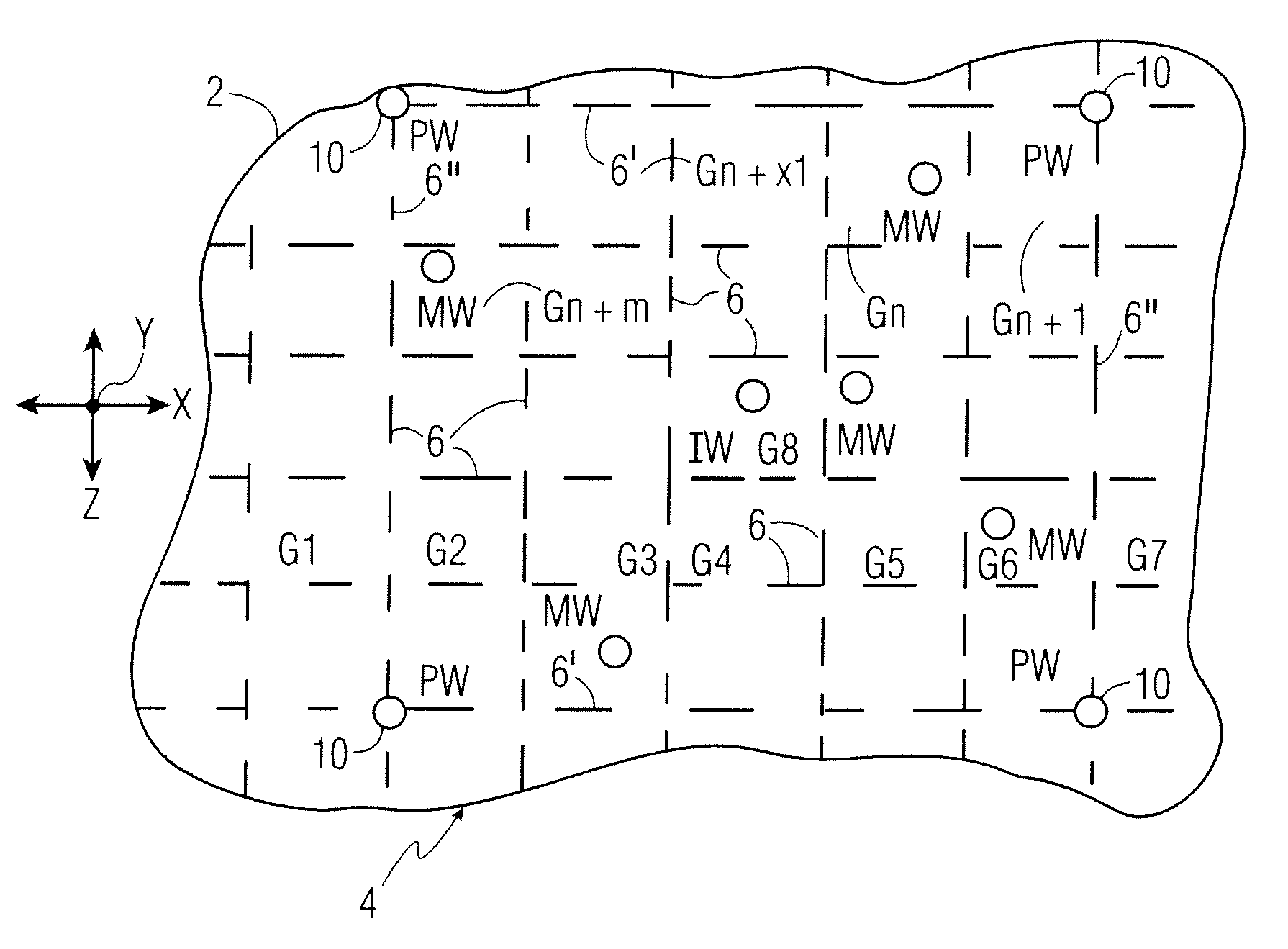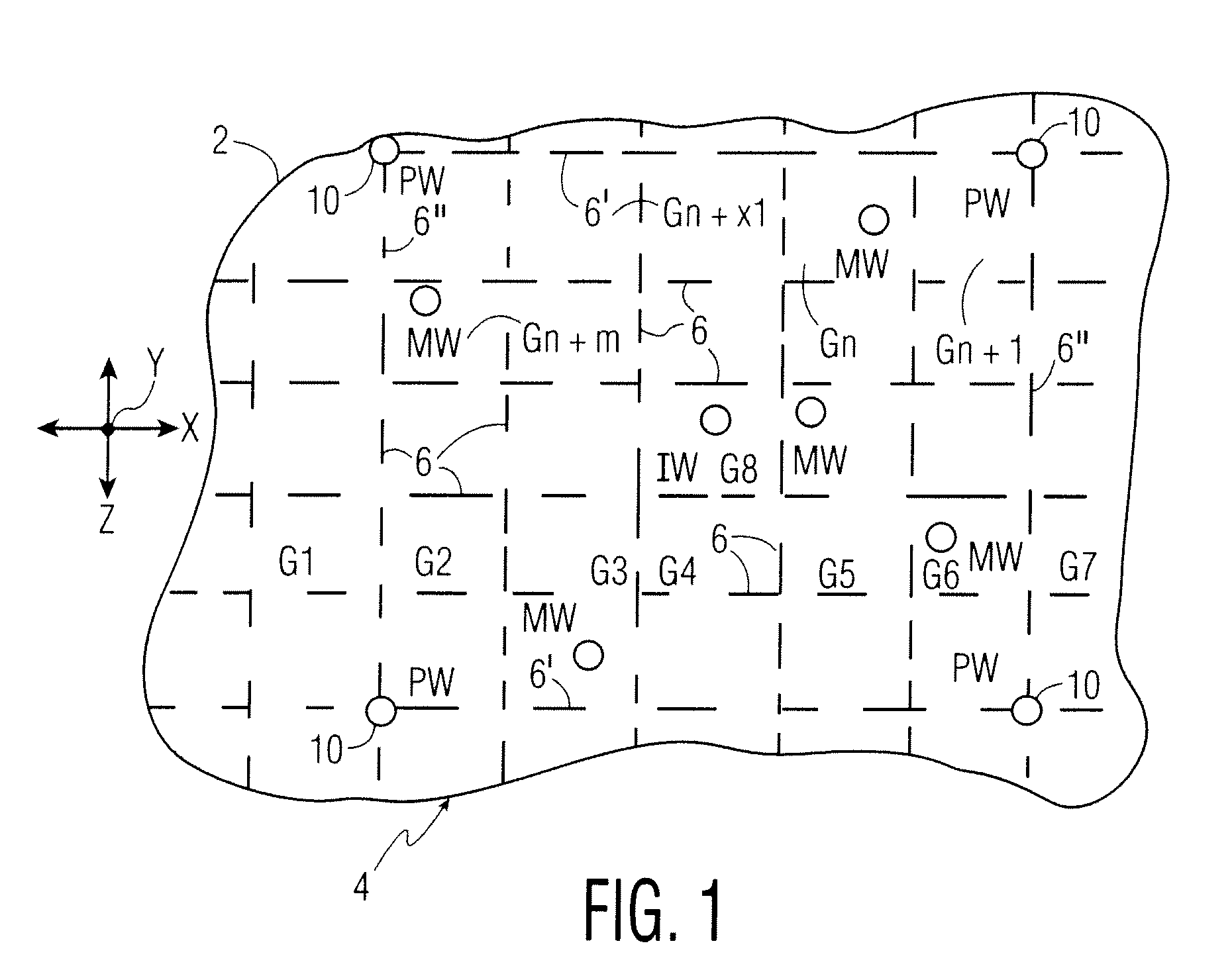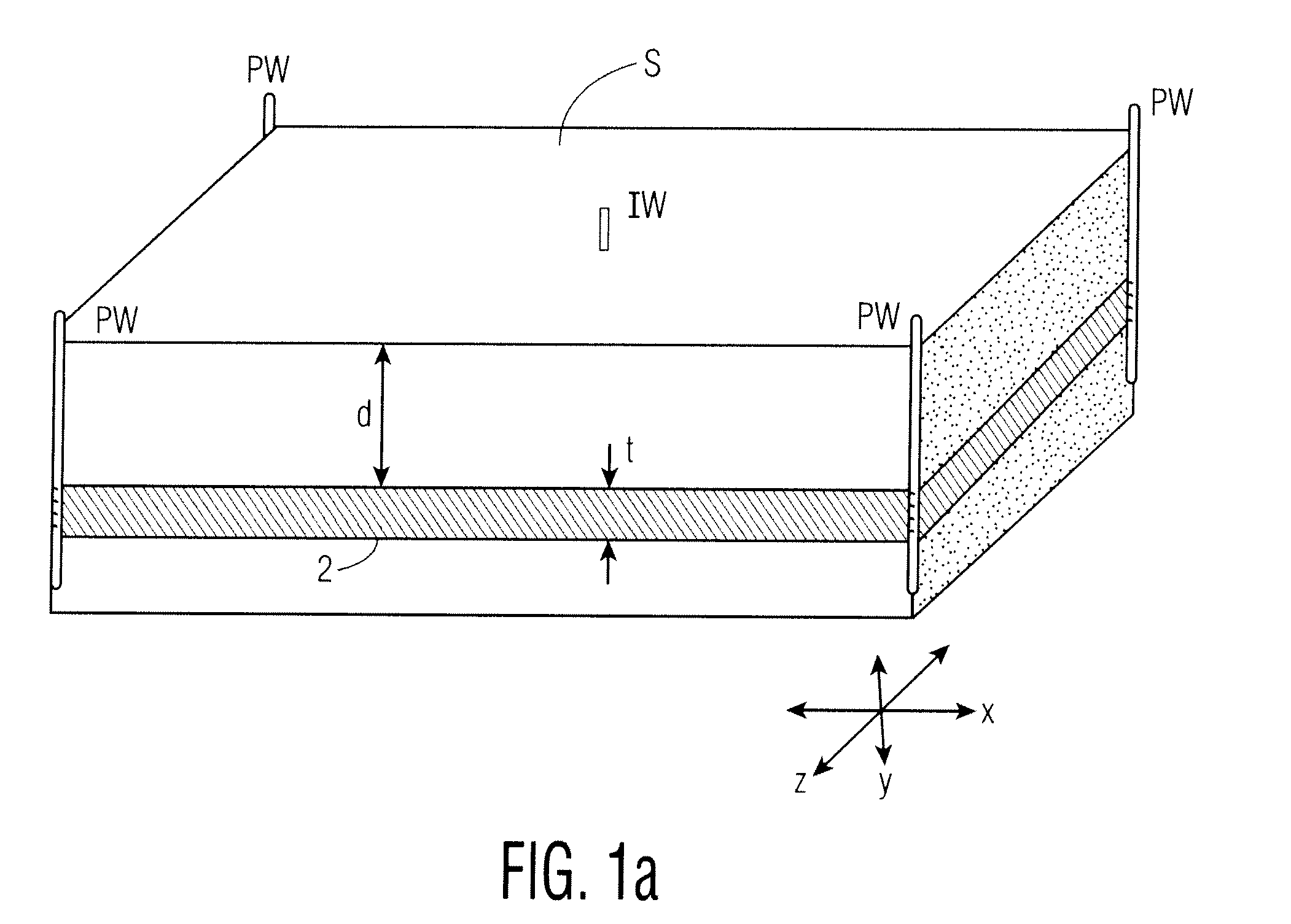Method for evaluation, design and optimization of in-situ bioconversion processes
a bioconversion and in-situ technology, applied in the direction of waste based fuel, instruments, borehole/well accessories, etc., can solve the problems of reducing the output of the converted deposit, the energy stored in the coal deposit exceeds the consumption of u.s. annual crude oil, and the inability to mine deposits
- Summary
- Abstract
- Description
- Claims
- Application Information
AI Technical Summary
Benefits of technology
Problems solved by technology
Method used
Image
Examples
Embodiment Construction
[0031]Microbial methanogenic consortia, either indigenous or non-indigenous to the carbon-bearing subterranean formation of interest, such as coal for example, are capable of metabolizing carbon and converting it to desired and useful components such as methane, carbon dioxide and other hydrocarbons. The amount of these bioconversion component products that are produced, and the rate of such production, is recognized in the present embodiment as a function of several factors, including but not necessarily limited to, the specific microbial consortia present, the nature or type of the carbon-bearing formation, the temperature and pressure of the formation, the presence and geochemistry of the water within the formation, the availability and quantity of nutrients required by the microbial consortia to survive and grow, the presence or saturation of methane and other bioconversion products or components, and several other factors. Therefore the efficient bioconversion of the carbon-bea...
PUM
| Property | Measurement | Unit |
|---|---|---|
| time | aaaaa | aaaaa |
| computing time | aaaaa | aaaaa |
| computing time | aaaaa | aaaaa |
Abstract
Description
Claims
Application Information
 Login to View More
Login to View More - R&D
- Intellectual Property
- Life Sciences
- Materials
- Tech Scout
- Unparalleled Data Quality
- Higher Quality Content
- 60% Fewer Hallucinations
Browse by: Latest US Patents, China's latest patents, Technical Efficacy Thesaurus, Application Domain, Technology Topic, Popular Technical Reports.
© 2025 PatSnap. All rights reserved.Legal|Privacy policy|Modern Slavery Act Transparency Statement|Sitemap|About US| Contact US: help@patsnap.com



